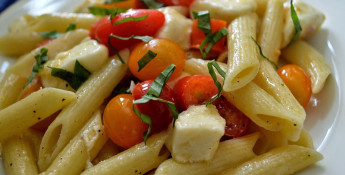By Chef Alli on May 26, 2021
Cooking with the Right Oil

Did you know the oils you choose to cook with can make or break your dish?
When oils are cooked at high temperatures, they eventually reach their smoke point. The smoke point is the temperature at which the oil is no longer stable and will begin to break down.
When a cooking oil is pushed past its smoke point, it usually creates an undesirable burnt flavor. And, when an oil gets too hot, it breaks down and begins to oxidize, releasing radical compounds that can be harmful.
Understanding which oils have high flash points and which oils are best for high heat cooking can make all the difference. These oils are important to have on hand; they can be used for a variety of different cooking methods.
Finishing with the Right Oil
Finishing oils are created for flavor, not cooking. Cooking with a finishing oil is a recipe for disaster; they have a very low flash point and can burn quickly.
Finishing oils are true to their namesake: they’re used for finishing a dish. Chilled or room temperature ingredients can be tossed in the finishing oil, and the oil can be used as a garnish or drizzled over the top of a dish for additional flavor. Almond oil and walnut oil are good examples of finishing oils.
It’s automatic reflex to reach for that always-on-hand bottle of vegetable oil. However, we made this guide to help you learn which oils are best for different cooking situations and which varieties you’ll want to keep on hand.





